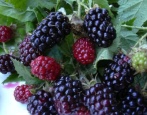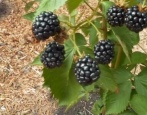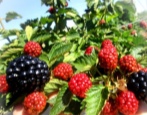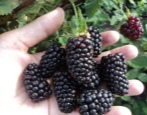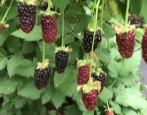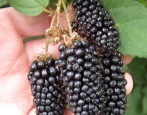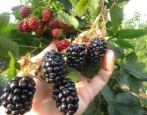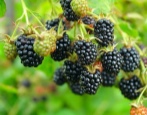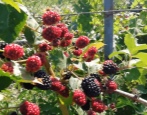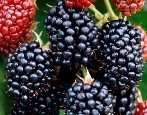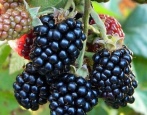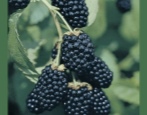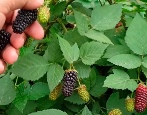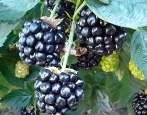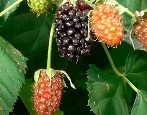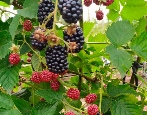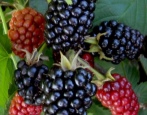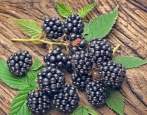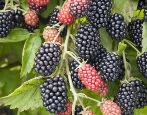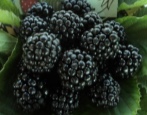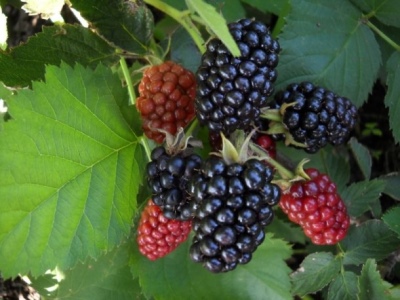
- Authors: Poland, Jan Danek
- Taste: sweet and sour
- Scent : floral
- The presence of thorns: No
- Berry weight, g: 8-10
- Berry size: large
- Berry color: black
- Fruiting period: from the end of July
- Yield: up to 10 kg per bush
- Drop off location: windproof
Blackberry is a very tasty and healthy berry, which contains many components to support immunity and restore memory. Gardeners try to grow unpretentious berries on their backyards, without thorns, resistant to weather fluctuations. One of these is the Orcan blackberry.
Breeding history of the variety
Orcan is a promising blackberry variety, bred almost 40 years ago by Polish breeders by crossing Black Catin and Arc1084. The result is a large-fruited berry with high yields. It is Poland that is home to many blackberry varieties. Due to their resistance to heat, drought and moderate frost, Orcan blackberries are good for growing both at home and on an industrial scale. This variety is popular in Poland, Russia, Ukraine.
Description of the variety
Blackberry Orcan is a plant with powerful and thick shoots, the length of which can reach 3 or even 5 meters. The variety is characterized by early ripening of berries and a complete absence of thorns, due to which the harvest is completely safe.
Ripening terms
Depending on climatic conditions, the timing of ripening and fruiting may be shifted. The first flowers on the bushes can be seen at the end of May, and the berries can appear in the second half of June. On average, the period of active fruiting lasts 1-1.5 months.
Growing regions
The variety can be grown both in the southern and northern regions. If the climate is warm, then you can plant the berries in the fall, and if the climate is harsh, then the optimal season will be spring, so the plant will gain strength and get stronger by winter. The only place where the plant may not take root is in regions with high humidity. In such places, blackberries grow, but their taste and aroma can be distorted, lost.
Yield
The yield of the variety is high, so farmers who grow Orcan blackberries for sale and processing are very fond of this blackberry species. With proper care, blackberry bushes can bear fruit for 15-20 years. On average, up to 7-10 kg of berries can be harvested from one bush.
Berries and their taste
Orkan berries are barrel-shaped, have a black glossy color and a considerable weight - each berry is 5-8 grams. The fruits are neatly collected in a brush. The taste of blackberries is rich, sweet, with hints of subtle sourness, and the aroma is incredibly bright. The structure of the berries is rather soft and fragile, so transport must be careful.
Growing features
To plant blackberries, you must choose the right site and be sure to observe the timing of planting the material in the soil.
Site selection and soil preparation
An ideal place for breeding will be a lit place where the sun's rays fall. It is better if the site is on a hill, and not in a lowland, since excess moisture will negatively affect the yield and the rate of ripening of berries. Protection against wind and drafts is also a prerequisite. As for the soil, loam or fertile sandy loam with a neutral acid-base balance will be the best. When growing, trellis are used for hanging branches, which provides ease of care and harvesting.
Pruning
You need to cut off the stems that bear fruit, as well as young growth, which interferes with the development of the main bush. It is recommended to perform the procedure in the fall. The optimal size of a bush is 6-7 strong branches. Frozen branches are only pruned in the spring.
Watering and feeding
After planting, regular watering is carried out for several months, which will speed up rooting. Pour one bucket of water for each bush. After two months, watering is reduced to once a week. In extreme heat, you can build an irrigation system so that the soil does not dry out. To keep it moist and breathe, it should be weeded and weeded. If the soil is fertile and nutritious, then replenishment of the bushes can be done after 3 years. These are humus, compost, potash, mineral and organic fertilizers.
Frost resistance and preparation for winter
This variety is frost-resistant. It can withstand temperatures down to –20… 24 degrees. After the harvest is complete, the bushes are removed from the supports and carefully laid along the structures. In severe frosts, the plant needs protection, which can be provided with agrofibre or straw.
Diseases and pests
Despite its excellent immunity, blackberries sometimes suffer from the invasion of the May beetle and bear, aphids and stem flies, as well as from the spider mite and flower beetle. Pest control is carried out using special preparations.
Reproduction
Reproduction takes place in three ways - by tops, cuttings and dividing the bush into parts.
Review overview
After reviewing the reviews of farmers growing a huge number of berries and amateur gardeners, we can conclude that the plant is unpretentious in care, does not require huge efforts and financial costs. In addition, the berry is very juicy, aromatic, large, ideal for fresh eating, for canning and freezing.
